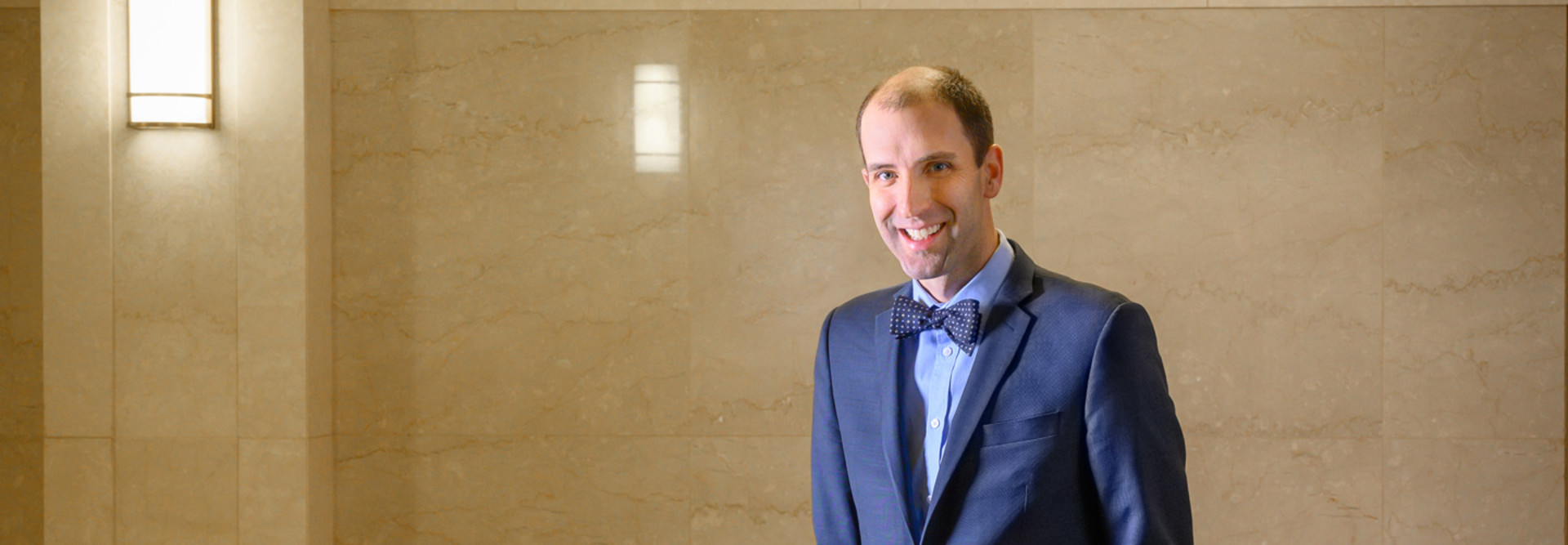Dr. Neil Evans, an internist at the Washington DC VA Medical Center, was convinced that the patient on the phone had developed a potentially dangerous injection-site abscess and needed to be seen as soon as possible.
However, the patient, an elderly veteran caring for a wife with dementia, insisted that he couldn’t go anywhere on such short notice, much less a hospital more than 100 miles from his home.
But Evans, who is also head of the Office of Connected Care for the Department of Veterans Affairs, had a solution. He set up an emergency virtual appointment via VA Video Connect, the agency’s “anywhere-to-anywhere” telemedicine application that allows patients to be examined by VA providers without leaving home.
Telemedicine is not a new concept for federal agencies that provide healthcare, such as the Defense Department and VA, which is considered a pioneer in the field. But the technology is fast becoming more integrated, more mobile and more accepted by providers and patients alike.
“Over the next 10 years, we’re actually going to see virtual visits outnumber in-person visits,” predicts Jennifer Covich Bordenick, CEO of the eHealth Initiative, a nonprofit organization that seeks to drive improvements in healthcare through the use of technology. “It’s just exploding. Patients love the convenience of it, and it allows healthcare organizations to increase access, reduce their no-show rates and avoid a lot of inefficiencies and costs.”

VA Uses Telehealth to Reach More Veterans
Here’s how telemedicine worked for Evans’s patient: Within minutes, the system sent the man an email with a secure link to a virtual exam room. Patients are able to access the link using any device that has an internet connection (even 3G or 4G), a microphone, speakers and a web browser.
Evans used a high-definition monitor to zoom in on the patient’s abdomen (VA Video Connect works with any video-enabled mobile or hardwired device). He quickly determined that the “soft, squishy” spot he’d been concerned about was a small hernia, which needed to be addressed but did not require immediate attention. The appointment took just a few minutes.
“We both walked away from that encounter thrilled,” Evans recalls. “I saved him two hours of driving and all the stress that would be involved, and I no longer had to worry about what the clinical situation was for him.”
MORE FROM FEDTECH: See how virtual healthcare tech helps improve the Military Health System.
VA Leads the Way on Telehealth Deployments
Telemedicine helps underserved areas and populations gain access to specialty services such as oncology, mental healthcare and substance abuse counseling, says Marcia Ward, director of the University of Iowa’s Rural Telehealth Research Center.
“I think we’re reaching a tipping point, as payers are expanding reimbursement for telemedicine appointments,” she says. Over the past year, she adds, the Centers for Medicare & Medicaid Services, which determines which medical procedures are paid for by Medicare, has shown a willingness to cover more telehealth services.
The VA leads the way in using video to enhance care for the 9 million veterans enrolled in its healthcare programs. Since 2006, it has routinely employed a secure, hardwired, reliable telehealth system to connect providers at its more than 170 medical centers and hospitals with its 300 community-based veterans centers and 1,069 outpatient clinics.
Its clinic-to-clinic offerings include Tele-ICU centers, which link intensive care specialists to hospitals via video; and the National TeleStroke Program, which connects stroke experts to less-equipped hospitals via tablets rather than teleconferencing equipment.
Still, the VA’s anywhere-to-anywhere telehealth initiative, which includes the nearly 2-year-old VA Video Connect application (a VA customization of the Pexip Infinity platform), is taking video-based care to a new level, says Dr. Leonie Heyworth, the VA’s director of synchronous telemedicine.
VA Video Connect lets the VA care for more patients while it tries to fill 24,000 open healthcare positions, including 2,600 physician spots.
The service is popular for mental health care, dermatology issues and post-surgical or post-hospitalization follow-up. The agency provides 700 home-based video visits a day; that number is growing.
“We are reaching patients and serving them in ways we really couldn’t before,” Heyworth says.
Video connects far-flung family members with the veteran’s medical team to discuss and agree on a care plan.
It also works well for vets with post-traumatic stress or other mental health issues who would prefer a virtual visit in a place where they feel comfortable over one that involves any travel.
“It’s more personal,” says Evans. “I recently had a great visit with a patient in which I had the most open conversation I’ve ever had with him — and it was punctuated by the fact that for the second half of the appointment his dog was hanging out with him.”
MORE FROM FEDTECH: Discover how NASA delivers telehealth to care for astronauts.
Army Uses Tech to Deliver Care from Afar
In January 2018, the Army launched the Virtual Medical Center at Brooke Army Medical Center in Texas to better enable and synchronize video-based care at the point of need and to aid operational readiness. It’s already supported the Texas-based 232nd Medical Battalion, the Army’s largest training battalion, as well as medical efforts in Puerto Rico after Hurricane Maria.
“What’s been challenging is that the video infrastructure in the Department of Defense was not created for telehealth, but for teleconferencing and meetings,” says Lt. Col. Sean Hipp, V-MEDCEN director. “What we’re doing is taking the technology and making it work for what we need.”
For example, the V-MEDCEN has equipped medics in combat zones with telehealth kits featuring high-definition cameras designed for medical care, a digital stethoscope and other remote monitoring equipment so that an aid station provider or a specialist located at a larger Army medical center can evaluate the wounded soldier's condition.
“With this setup, the provider can listen to a soldier’s heart and lungs, look in their mouth and ears, look at a wound and give a physical exam from afar,” explains Maj. Dan Yourk, V-MEDCEN deputy director of clinical operations.
Connecting back-end providers with front-line medics can be especially challenging, but the Army makes it happen across existing classified and unclassified networks using Global Video Services, a DISA product based on Vidyo technology.
The V-MEDCEN has established virtual connections among specialists at major Army medical centers and smaller medical treatment facilities across the U.S. and other countries, and it’s leveraging video to assist bases with maintaining readiness for regular service as well as combat. They expect to extend that capability to soldiers by mid-2019.
“We have a lot of geographically dispersed soldiers who have to meet their periodic health assessment requirement,” Hipp explains.
“They’ll be able to call a number and schedule a virtual encounter and then be able to connect with a provider over their phone, tablet or computer.”










